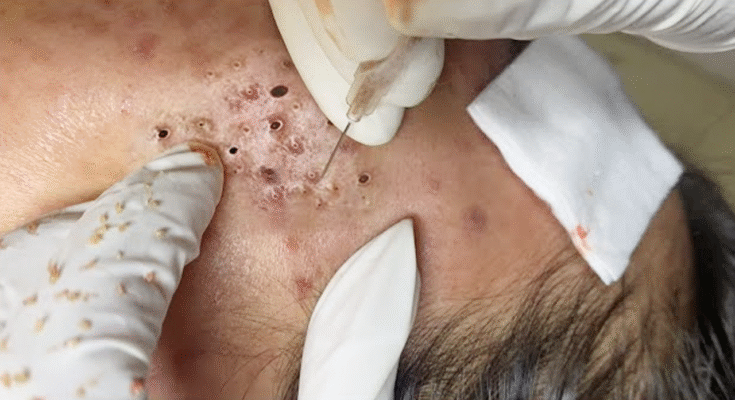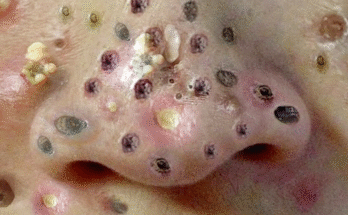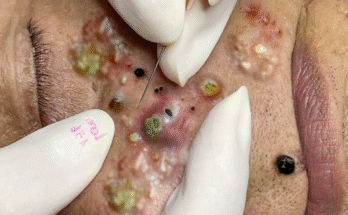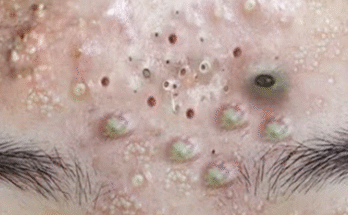Acne is one of the most common skin concerns in the world, affecting nearly 85% of people at some point in their lives. Yet not all acne is created equal. For some, breakouts appear as occasional whiteheads or blackheads that respond well to over-the-counter cleansers and spot treatments. For others, acne seems to come in waves — cyclical, painful, and resistant to topical products.
These differences often come down to what’s driving the acne: hormones or external factors like clogged pores and bacteria. Understanding whether you’re dealing with hormonal acne or regular acne is crucial for choosing the right treatment and preventing scarring or chronic inflammation.
This comprehensive guide will help you distinguish between the two, understand their root causes, and learn evidence-based treatments for each type.
1. Understanding Acne: The Basics
Before distinguishing hormonal acne from regular acne, it’s helpful to understand what acne actually is.
1.1 What Is Acne?
Acne vulgaris is a chronic inflammatory skin condition involving the pilosebaceous unit — the hair follicle and its associated sebaceous (oil) gland. It typically occurs when:
Sebum (oil) production increases.
Dead skin cells clog pores.
Bacteria (mainly Cutibacterium acnes, formerly Propionibacterium acnes) proliferate.
Inflammation develops around the blocked follicle.
The result? A range of blemishes — from blackheads and whiteheads to papules, pustules, nodules, and cysts.
2. Regular (Non-Hormonal) Acne: Causes and Characteristics
Regular acne, sometimes called “common acne,” is primarily driven by external factors and local skin conditions rather than systemic hormonal changes.
2.1 What Causes Regular Acne?
While hormones can play a role in nearly all acne, “regular” acne is mostly triggered by the following:
Excess oil and sebum production
Often due to genetics, oily skin types, or climate (especially humidity).
Pore clogging from dead skin cells
When the skin’s natural exfoliation process slows down, dead cells accumulate and block pores.
Bacterial growth
Cutibacterium acnes thrives in blocked follicles, leading to inflammation.
Cosmetic and skincare products
Heavy or comedogenic products (especially silicone-based primers, oils, and thick sunscreens) can contribute.
Environmental factors
Pollution, sweat, and friction (from masks or helmets — “maskne”) can irritate the skin.
Lifestyle habits
Poor cleansing, sleeping in makeup, or touching your face frequently can exacerbate breakouts.
2.2 Signs of Regular Acne
Appears anywhere on the face or body — forehead, nose, chin, chest, back, or shoulders.
Mixture of blackheads, whiteheads, papules, and pustules.
No clear hormonal pattern (breakouts aren’t tied to the menstrual cycle).
Responds to over-the-counter (OTC) treatments like benzoyl peroxide or salicylic acid.
Usually mild to moderate in severity.
2.3 Triggers
Poor skin hygiene
Occlusive makeup or sunscreens
Sweat buildup
Stress and lack of sleep
Diets high in dairy or high-glycemic foods (white bread, sugary snacks)
Friction (helmets, masks, phone screens)
3. Hormonal Acne: The Inside-Out Problem
Hormonal acne, as the name suggests, is fueled by fluctuations in hormones — especially androgens like testosterone. These hormones increase sebum production, influence skin cell turnover, and affect inflammation.
3.1 Who Gets Hormonal Acne?
Women in their 20s to 40s, even if they didn’t have acne as teenagers.
Teens experiencing puberty and androgen surges.
Women with conditions like PCOS (polycystic ovary syndrome) or thyroid imbalances.
Anyone under stress (which increases cortisol, indirectly affecting androgens).
3.2 Signs of Hormonal Acne
Location: Concentrated on the lower face, jawline, chin, and sometimes the neck.
Timing: Fluctuates with the menstrual cycle, often worsening one week before menstruation.
Type: Deep, painful cystic pimples rather than surface-level whiteheads.
Pattern: Recurring in the same areas monthly.
Other signs: Greasy skin, increased facial oil production, or even irregular menstrual cycles.
3.3 The Hormonal Connection
Hormonal acne is influenced by:
Androgens: These hormones (like testosterone) stimulate oil glands to produce more sebum.
Estrogen and Progesterone: Their fluctuations during the menstrual cycle influence inflammation and oiliness.
Cortisol: The “stress hormone” increases sebum production and worsens inflammation.
Insulin: High insulin levels (from sugar or refined carbs) increase androgen activity, linking diet to hormonal acne.
3.4 Common Misconception
Many people think that because their acne worsens during their period, all their acne must be hormonal. But true hormonal acne tends to persist, even with a consistent skincare routine, and often requires medical treatment rather than just topical care.
4. How to Tell the Difference: Hormonal vs. Regular Acne
Feature Hormonal Acne Regular Acne
Location Lower face, jawline, chin, neck Forehead, nose, cheeks, back, chest
Timing Cyclic (linked to menstrual cycle or stress) Constant or random
Type of Lesions Deep, painful cysts and nodules Blackheads, whiteheads, pustules
Onset Often adult-onset (20s–40s) Often teenage-onset
Triggers Hormone fluctuations, stress, diet (sugar, dairy) Sweat, oil, comedogenic products
Treatment Response Resistant to OTC treatments; needs medical/hormonal therapy Responds well to topical acne products
Oiliness Persistent oiliness, especially around period Varies depending on skin type
Accompanying Symptoms Irregular periods, hair thinning, excess hair growth (possible PCOS) None usually
5. Diagnosing the Type of Acne
A dermatologist can often identify the acne type by examining the pattern and discussing your history. However, additional tests might help if hormonal acne is suspected:
Blood tests for androgen, estrogen, progesterone, or thyroid levels.
Pelvic ultrasound to check for PCOS.
Lifestyle assessment (diet, stress, sleep).
Remember, many people have a combination of both hormonal and regular acne, which means treatment must be comprehensive.
6. Treating Regular Acne Effectively
6.1 Step 1: Gentle but Effective Cleansing
Use a mild, sulfate-free cleanser with salicylic acid (BHA) to remove oil and unclog pores. Avoid harsh scrubs that damage the skin barrier.
Best ingredients:
Salicylic acid (0.5–2%)
Glycolic acid (AHA)
Benzoyl peroxide washes
6.2 Step 2: Targeted Topical Treatments
Benzoyl Peroxide: Kills acne-causing bacteria and reduces inflammation.
Retinoids (Adapalene, Tretinoin): Promote cell turnover, prevent clogged pores.
Niacinamide: Reduces redness and sebum production.
Azelaic Acid: Fights bacteria and hyperpigmentation.
6.3 Step 3: Non-Comedogenic Moisturizer and Sunscreen
Keeping the skin hydrated prevents overproduction of oil. Look for gel-based, oil-free moisturizers and broad-spectrum SPF 30+.
6.4 Step 4: Professional Treatments
Chemical Peels (AHA/BHA)
Microdermabrasion
LED light therapy (blue light for bacteria)
6.5 Step 5: Lifestyle Adjustments
Change pillowcases frequently.
Clean your phone screen daily.
Avoid touching or picking at pimples.
Balance your diet with anti-inflammatory foods (omega-3s, green veggies).
7. Treating Hormonal Acne Effectively
Hormonal acne often requires an inside-out approach since the root cause lies within hormonal fluctuations.
7.1 Step 1: Medical Treatments
a. Oral Contraceptives (Birth Control Pills)
Certain combination pills (containing estrogen and progestin) help regulate hormone fluctuations and reduce sebum production. Popular ones include Yaz, Yasmin, and Ortho Tri-Cyclen.
b. Spironolactone
A medication that blocks androgen receptors, reducing oil production and breakouts. Often prescribed to adult women with persistent jawline acne.
c. Anti-Androgen Therapy
In women with PCOS or elevated testosterone, anti-androgens can restore balance and clear acne.
d. Hormone Regulation (PCOS management)
Lifestyle interventions, insulin regulation, and targeted supplements can reduce symptoms and breakouts.
7.2 Step 2: Topical Treatments (Supportive)
Even hormonal acne benefits from topical therapy to control inflammation and bacterial growth:
Retinoids (Tretinoin, Adapalene): Prevent clogged pores.
Azelaic Acid: Helps with post-acne marks and inflammation.
Niacinamide: Soothes redness.
Sulfur-based masks: Absorb oil and calm cystic lesions.
7.3 Step 3: Dietary and Lifestyle Adjustments
Reduce sugar and refined carbs — they spike insulin and worsen hormonal imbalance.
Limit dairy — especially skim milk, which has been linked to acne.
Eat zinc-rich foods (pumpkin seeds, beans) and omega-3 fatty acids (salmon, flaxseed).
Manage stress through sleep, yoga, and mindfulness (to lower cortisol).
Exercise regularly — boosts circulation and hormone balance.
7.4 Step 4: Supplement Support
Some evidence-based supplements that may help hormonal acne include:
Zinc: Anti-inflammatory and sebum-regulating.
DIM (Diindolylmethane): Found in cruciferous vegetables, helps metabolize estrogen.
Omega-3s: Balance inflammatory response.
Probiotics: Support gut-skin axis and hormone balance.
(Always consult a healthcare professional before adding supplements.)
7.5 Step 5: Professional Treatments
For stubborn cystic hormonal acne:
Cortisone injections for individual cysts.
Chemical peels or laser therapy for long-term scarring and pigmentation.
Microneedling for texture repair.
8. When to See a Dermatologist
If your acne:
Persists despite consistent skincare for 8–12 weeks
Is painful, deep, or scarring
Worsens around your period
Appears suddenly in adulthood
Causes emotional distress
Then it’s time to see a dermatologist. Persistent acne isn’t just cosmetic — it’s medical, and effective treatment can prevent permanent damage.
9. Preventing Acne Recurrence
No matter the type, preventing acne requires long-term skin maintenance.
Daily Habits:
Cleanse twice daily.
Avoid over-exfoliating.
Use clean makeup brushes.
Sleep 7–9 hours per night.
Eat balanced meals.
Stay hydrated.
Skin Cycling Routine:
Try alternating nights with retinoids, exfoliating acids, and rest (hydration) to maintain a healthy barrier and minimize irritation.
10. Emotional and Psychological Aspects of Acne
Acne, whether hormonal or regular, can deeply affect confidence and mental health. Studies show people with acne experience higher rates of anxiety and depression, particularly when acne is severe or persistent.
Tips:
Avoid comparing your skin journey to others’.
Seek dermatological support early.
Remember, acne is treatable and manageable — it’s not a reflection of hygiene or worth.
11. The Bottom Line
Both hormonal and regular acne share surface similarities — but their causes, triggers, and treatments differ greatly.
Regular acne responds well to topical treatments, good skincare habits, and environmental control.
Hormonal acne requires deeper, systemic interventions like hormone regulation, prescription medications, and lifestyle adjustments.
Understanding your acne’s root cause is the key to effective, lasting results. Whether your breakouts are cyclical and deep or constant and surface-level, the right approach — guided by science and consistency — can restore clarity and confidence to your skin.



